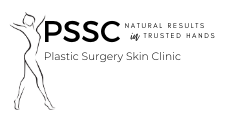As we’re approaching the new year, many of us are thinking about weight loss goals and are resolving to make a change, but there are side effects to weight loss that you might be worried about, including stretch marks. So, why does losing weight cause stretch marks? Does weight loss always cause stretch marks, or can you take steps to avoid them? Read this guide to find out how stretch marks are caused during weight loss and what to do if you’re ready to remove them.
Causes of stretch marks
Though hormones and genetics play a large part, striae or stretch marks are caused by the rapid stretching of the skin, which can happen in pregnancy, intense workouts, weight gain, growth, or rapid weight loss. Stretch marks usually present as streaks indented in the skin in a limited area, but they can also be pink, blue, red, or purple streaks, bright streaks that fade to a lighter colour, and can cover a large area of the body.
Stretch marks in weight loss
When you lose weight, stretch marks can develop from two sources. Firstly, stretch marks caused by weight gain start to become evident as the skin loosens. Secondly, stretch marks may also form because excess skin after weight loss pulls down on healthy skin.
During the stress on the skin, collagen and elastin become damaged and stretch marks are scars where that damage occurs. Stretch marks often appear red or pink initially because the body increases blood flow to that area to aid in healing the damage. Over time, the colour will fade, and the stretch marks will fade to your skin colour and only appear as indentations in the skin.
How to avoid stretch marks
People who are working toward large weight loss goals (kudos to you, by the way) should consider taking it slow. If you’ve found the “best fat burner for men” and are ready to start your weight loss journey, consider ditching the belly fat burner and instead lose weight slowly and naturally. Because stretch mark damage is associated with the speed of the change, consult your doctor about methods of controlling how quickly you lose weight. CoolSculpting, a non-surgical option for fat loss, is offered by plastic surgery clinics and won’t cause stretch marks but will help you achieve your weight loss goals more quickly.
Bodybuilders who try to increase muscle mass rapidly are also prone to stretch marks. Intense workouts coupled with anabolic steroids are risk factors. Again, the way to avoid stretch marks is to modify your goals and slow down the pace of muscle growth.
Pregnancy is a huge factor in developing stretch marks. Not only is your belly swelling, but many women experience significant weight gain during pregnancy. Again, consult your doctor for diet advice and weight control techniques.
How can you get stretch marks removed?
Despite your best efforts, you may find you develop stretch marks. We thought there was no cure for these unsightly lines only a few years ago because we believed the damage to the collagen and elastin was irreversible. Today, there are several treatment steps and, with the advent of fractional laser technology, proven stretch mark removal methods.
The first step in the treatment of stretch marks is often a cream that aids in healing the skin. If the marks do not respond to this initial treatment, your doctor may recommend non-ablative fractional laser technology, known as Fractora treatments.
Fractora allows your doctor to target the skin’s subdermal layers and stimulates collagen and elastin production to improve texture and tone significantly. You’ll see improvement after only three to five short treatments, with little downtime.
Get stretch mark removal with PSSC
PSSC is a plastic surgery clinic run by Dr. Richard Rival and Dr. Victoria Hayward, both dedicated to helping you achieve your weight loss goals with clear, beautiful skin. If you’re looking for stretch mark removal or searching for “coolsculpting near me,” PSSC is your one-stop destination. PSSC offers comprehensive, non-invasive skin care and body sculpting treatments with almost no downtime. Contact PSSC today to book a consultation.

